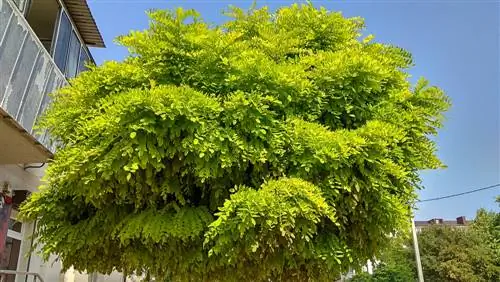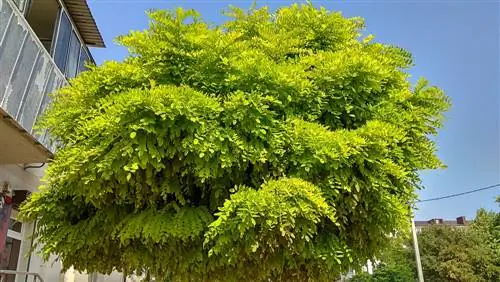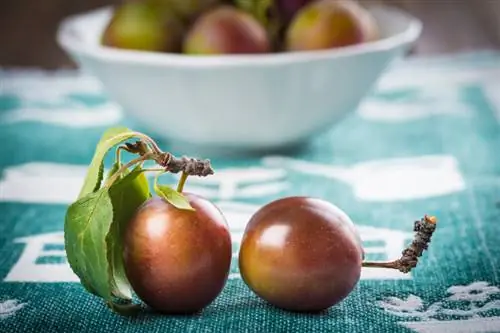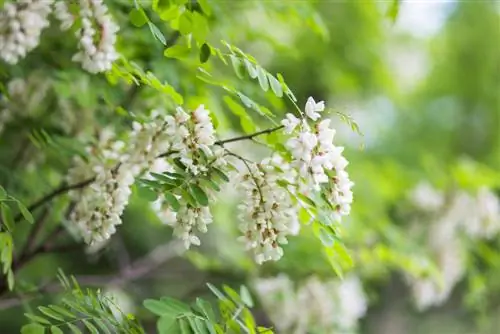- Author admin [email protected].
- Public 2023-12-16 16:46.
- Last modified 2025-01-23 11:22.
How you have to cut your robinia depends on whether it is an original form or refined variants. There is often confusion between the names black locust, black locust and false acacia. Once you understand the growth of these ornamental trees, care pruning is straightforward.

How do I cut a mock acacia correctly?
Mock acacias are best cut in late winter to spring, shortly before the leaves emerge. Remove damaged branches at the base above the branch ring, trim damage in the outer crown area by two-thirds and ensure that a sleeping eye is retained. If necessary, carry out generous thinning.
Growth
There are two forms of mock acacia that are commonly planted in gardens. These include the common black locust (Robinia pseudoacacia), which is also known as the false acacia because of its leaf shape, and the ball locust (Robinia pseudoacacia umbraculifera). This ornamental tree represents a subspecies.
What's the difference?
Mock acacias naturally develop a short trunk that branches at a low height. Ball robinias naturally form a spherical crown. These small trees grow two meters high and reach a width of four to five meters. Since they do not develop thorns, pruning is not a problem. Most specimens are refined cultivars that were grafted onto a standard tree.
Techniques
Neither ball locust nor acacia require annual pruning. However, both trees prove to be very easy to cut. Such interventions promote the formation of a symmetrical crown in spherical acacias. You can tell whether the specimen has been refined by a slight thickening on the trunk. You can completely remove all shoots below this point. If you want to train the false acacia into a standard tree, you should delimb it regularly.
Tip
The ideal period for pruning interventions extends from late winter to spring shortly before the leaves emerge.
Lighting
You can thin out spherical acacias generously if the crown has grown too densely. This measure ensures that more light reaches the inside of the crown and that no bald spots appear. Remove damaged branches completely by cutting them off at the base above the branch ring. If he althy branches affect the symmetry, they are also removed.
Keeping he althy
If ball acacias have damage in the outer crown area, you should shorten them by two thirds. Reduce all acacia branches to maintain a sleeping eye. This will promote an even appearance, as the trees will sprout in these areas next spring.
Removing branches from the mock acacia is also not a problem if they are damaged or grow sideways and disrupt the overall picture. Make sure that no stubs are left on the base branch when cutting and that the tissue on the branch underneath remains intact.
Radical cut
Radical interventions are advisable for spherical cultivation if the crown shows severe damage. Such measures carry a certain risk that the tree will die. Storm damage or a massive pest infestation can also make a radical cut necessary for mock acacias. This original species has a strong tendency to form runners after such interventions. In any case, proceed with caution.
How to proceed:
- removing competing branches
- remove specimens that are too close together
- Cut off branches with damaged bark and broken areas






